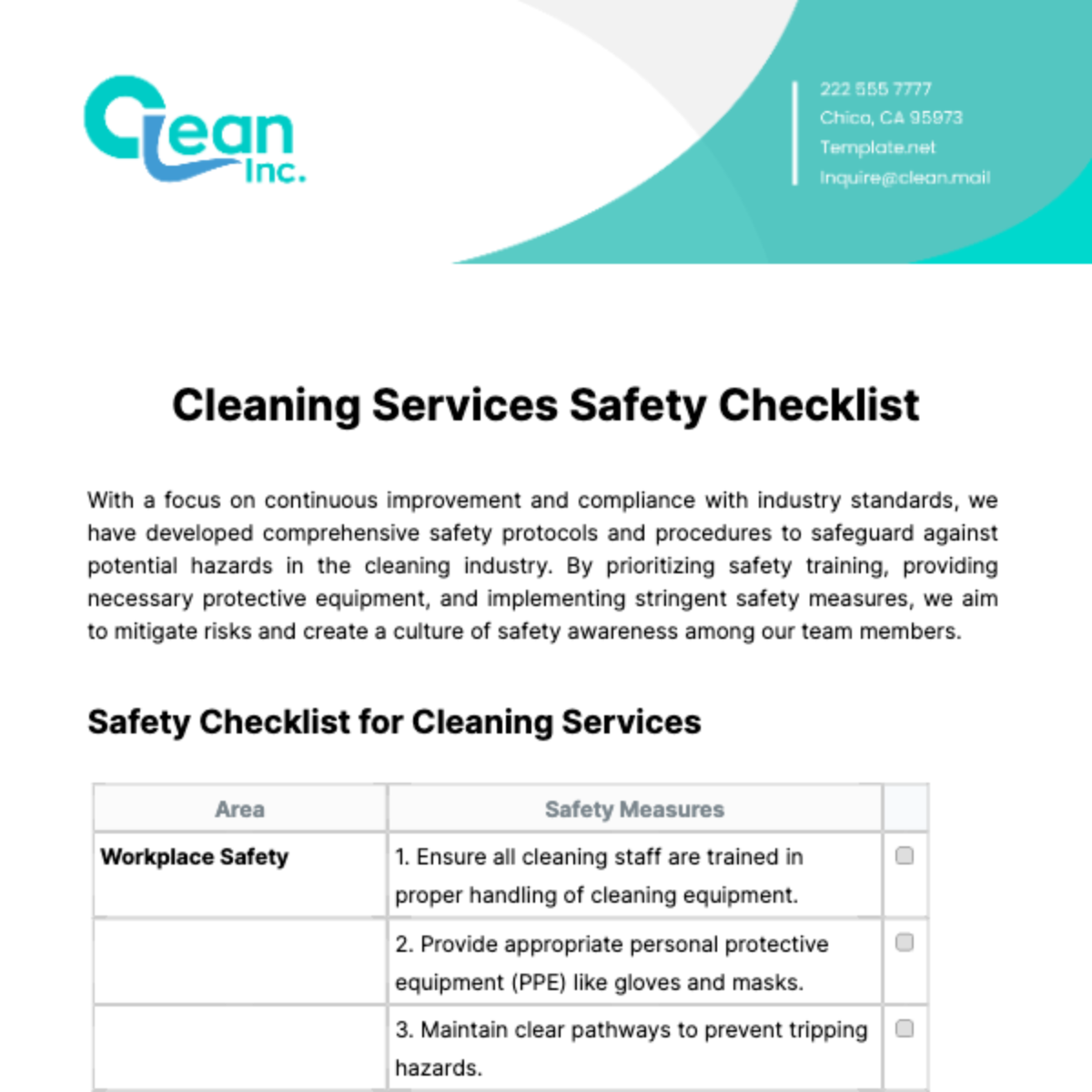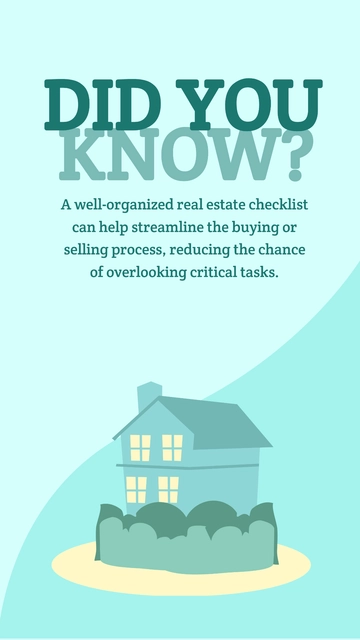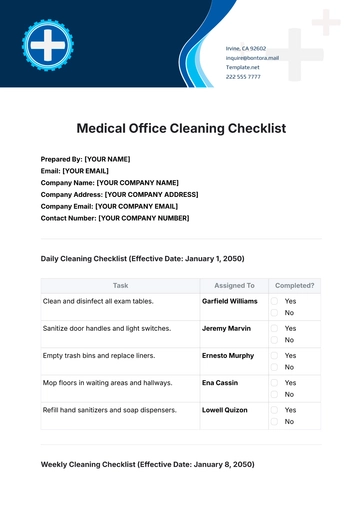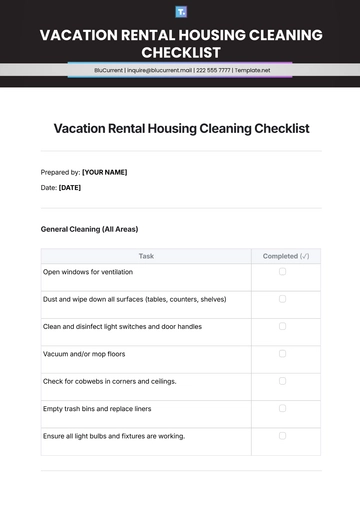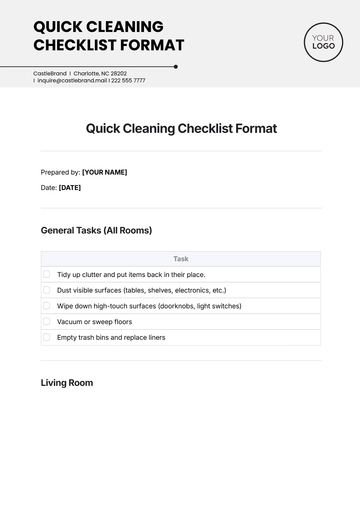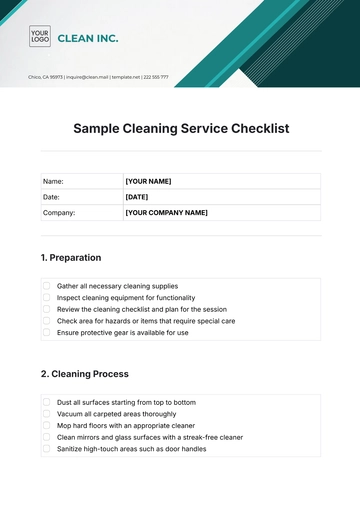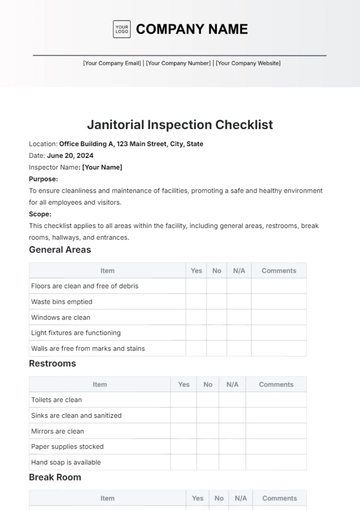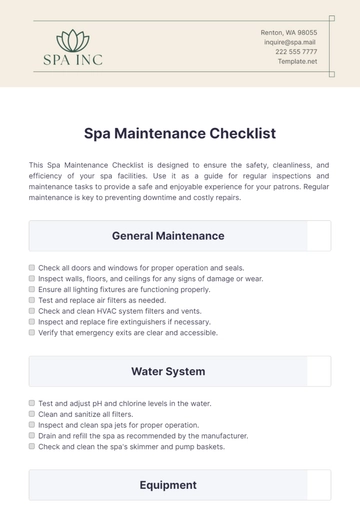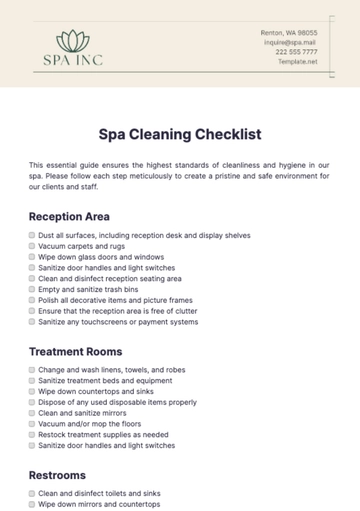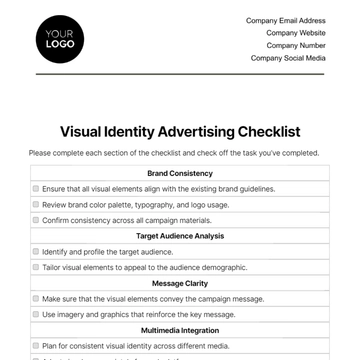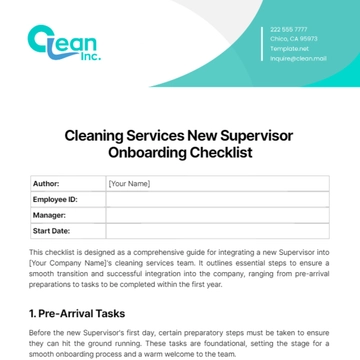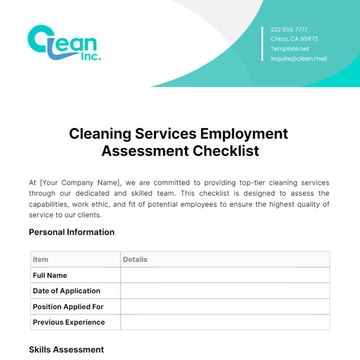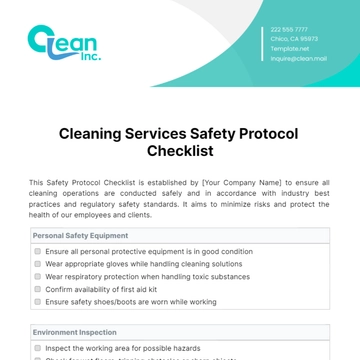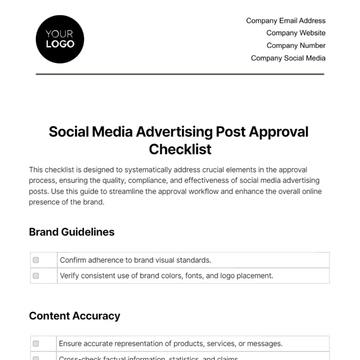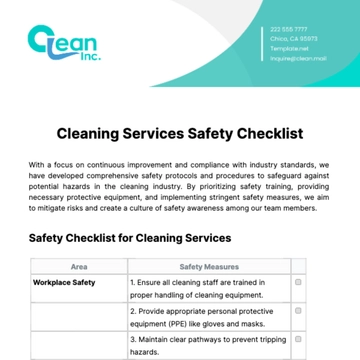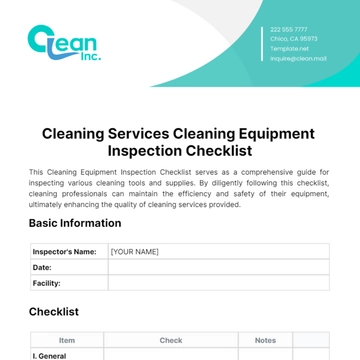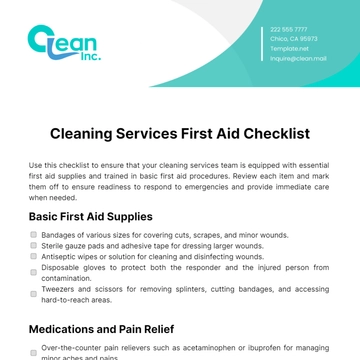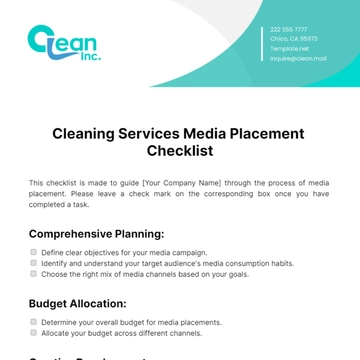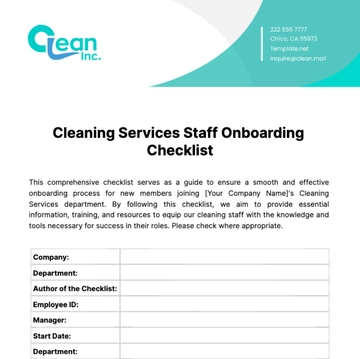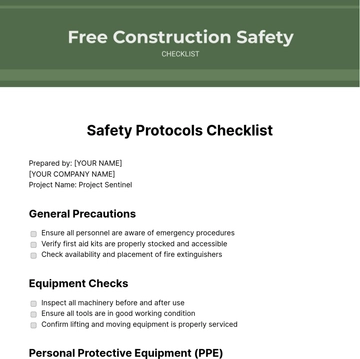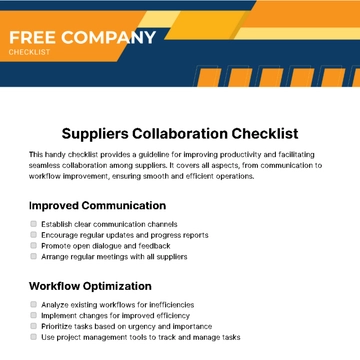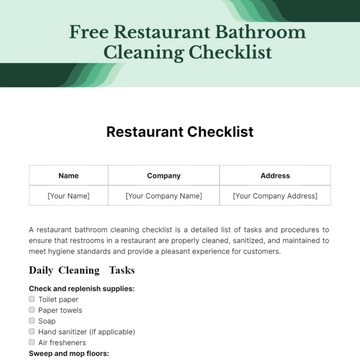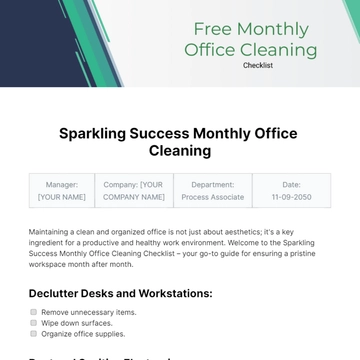Cleaning Services Safety Checklist
With a focus on continuous improvement and compliance with industry standards, we have developed comprehensive safety protocols and procedures to safeguard against potential hazards in the cleaning industry. By prioritizing safety training, providing necessary protective equipment, and implementing stringent safety measures, we aim to mitigate risks and create a culture of safety awareness among our team members.
Safety Checklist for Cleaning Services
Area | Safety Measures | |
|---|
Workplace Safety | 1. Ensure all cleaning staff are trained in proper handling of cleaning equipment. | |
| 2. Provide appropriate personal protective equipment (PPE) like gloves and masks. | |
| 3. Maintain clear pathways to prevent tripping hazards. | |
| 4. Store cleaning chemicals in labeled, tightly-sealed containers away from heat. | |
| 5. Regularly inspect and maintain cleaning equipment for safety. | |
Chemical Handling Safety | 1. Follow manufacturer's instructions for handling, mixing, and diluting chemicals. | |
| 2. Use chemical cleaners in well-ventilated areas. | |
| 3. Avoid mixing different chemicals unless directed by manufacturer. | |
| 4. Provide appropriate spill kits and instructions for chemical spills. | |
| 5. Train staff on emergency procedures in case of chemical exposure. | |
Electrical Safety | 1. Inspect electrical cords and plugs for damage before use. | |
| 2. Avoid overloading electrical outlets. | |
| 3. Use Ground Fault Circuit Interrupters (GFCIs) for outlets near water sources. | |
| 4. Keep electrical equipment away from water and wet areas. | |
| 5. Report any electrical hazards or malfunctions immediately. | |
Ergonomic Safety | 1. Provide ergonomic cleaning tools to reduce strain. | |
| 2. Encourage proper lifting techniques to prevent back injuries. | |
| 3. Schedule regular breaks to prevent fatigue. | |
| 4. Adjust workstations for optimal comfort and posture. | |
| 5. Train staff on ergonomic principles and practices. | |
Emergency Preparedness | 1. Post emergency contact numbers and procedures prominently. | |
| 2. Conduct regular drills for fire, evacuation, and other emergencies. | |
| 3. Maintain first aid kits and ensure staff are trained in first aid/CPR. | |
| 4. Establish a communication system for emergencies. | |
| 5. Designate assembly points for evacuations. | |
Cleaning Services Templates @ Template.net
